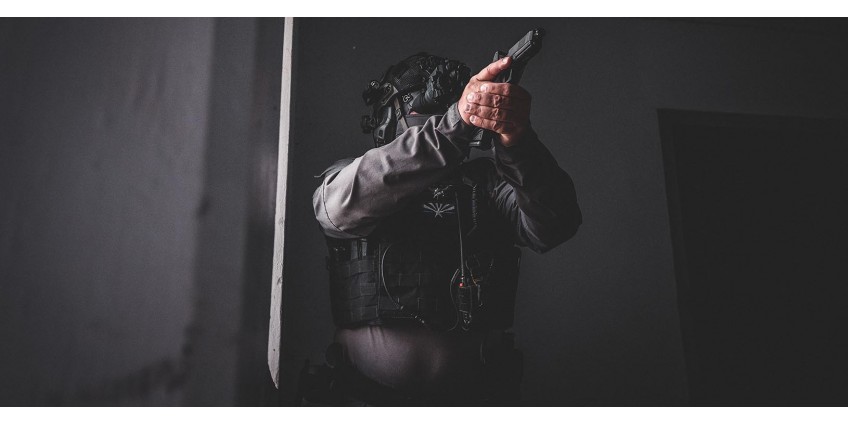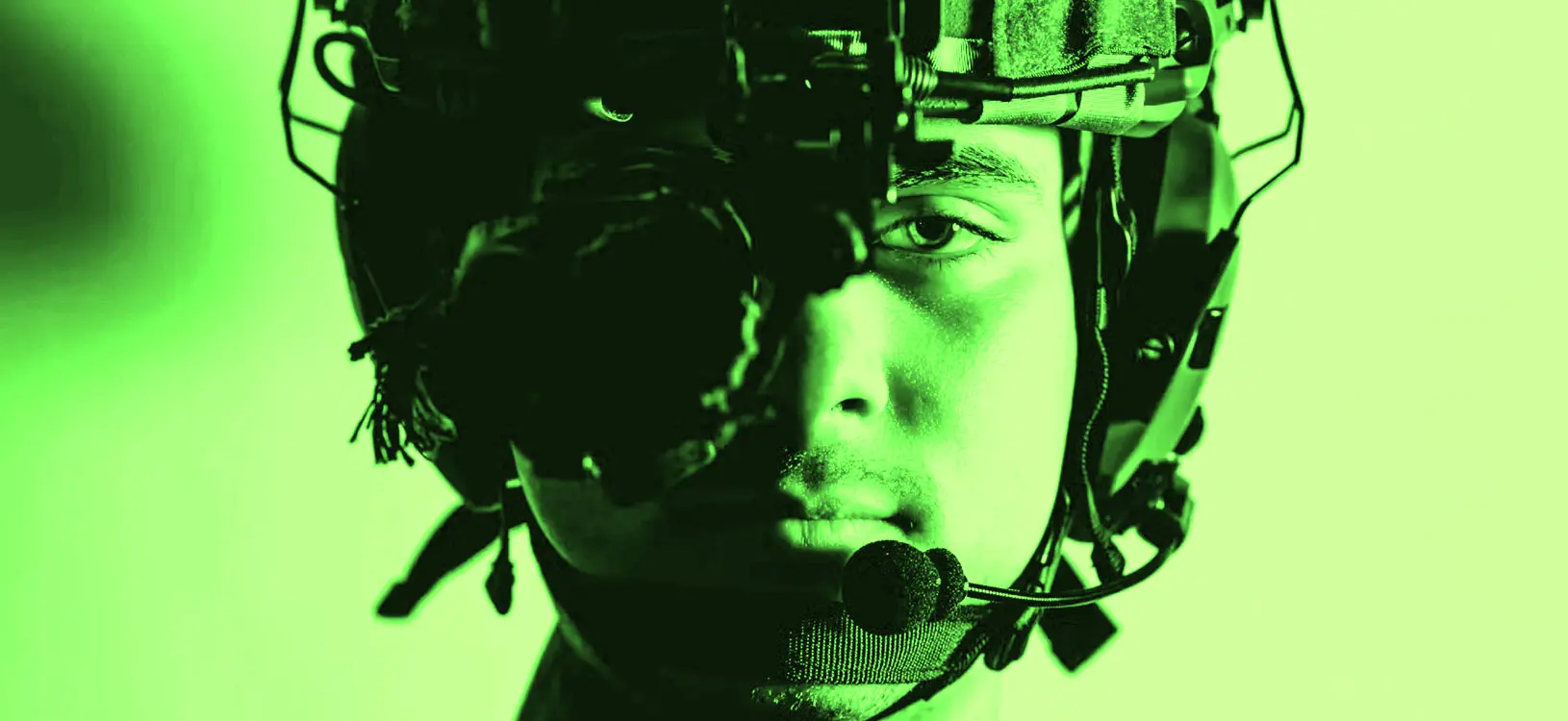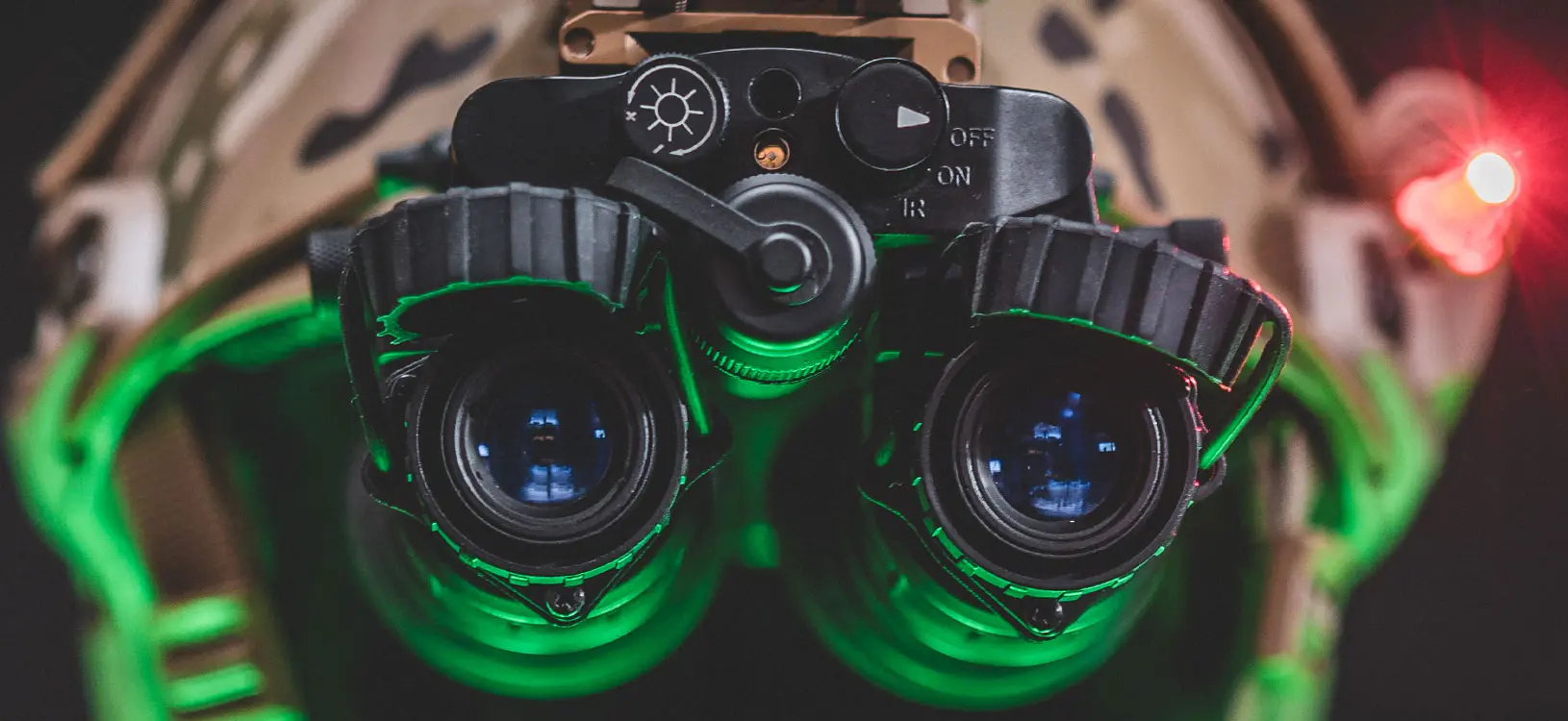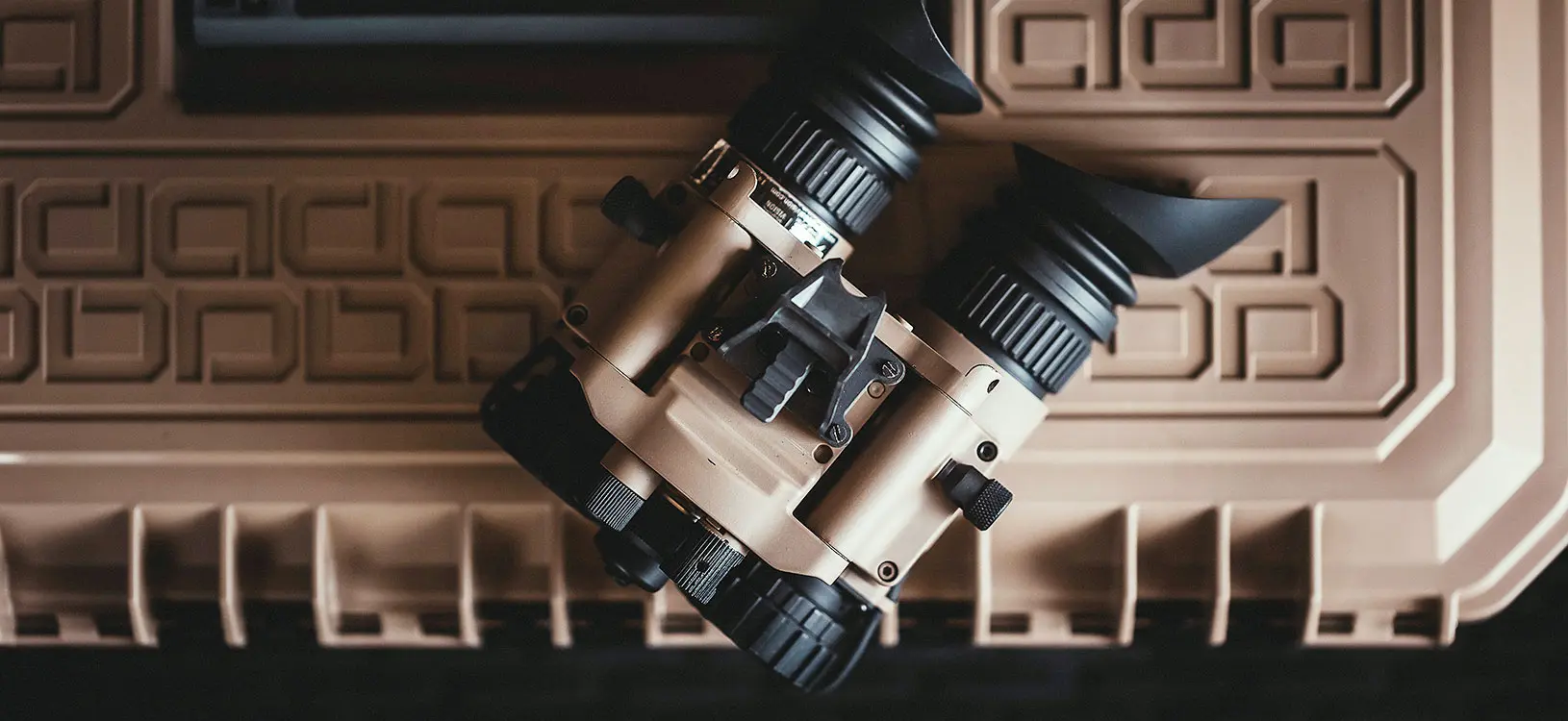
This product is not exportable outside the United States.
By adding this item to cart, you agree and acknowledge the Export Policy and confirm that you are a person in the United States with no intentions to illegally export the device.
This product is not exportable outside the United States.
By adding this item to cart, you agree and acknowledge the Export Policy and confirm that you are a person in the United States with no intentions to illegally export the device.


0

0


The night vision goggles can broaden your seeing ability immensely. That is a fact. But what is the maximum distance you can see the object when wearing this night vision device? How recognizable will the object look to you from that distance? Are there any external factors that will affect your ability to see through the night vision goggles? And can you use any equipment or technology to enhance the distance range of your night sight gear?
Goggles are the most straightforward and convenient to use among the various night vision equipment. They have a limited night vision range, the specific values of which depend on many factors. The optimal option is chosen, considering the user's need to see at a certain distance in low-light conditions. In addition to goggles, other devices support different types of night vision and help a person see far, even in the dark.
First and foremost, we can distinguish two significant factors that affect your night vision capabilities: those dependent on the goggles themselves and those caused by the ambient environment.
Let us first dwell on the environmental limitations. They include ambient light conditions and intensity – such as star and moonlight or complete darkness, for instance – the weather-based visibility conditions like fog, rain, or snowstorm, which may decrease the general visibility drastically, and even the natural or human-induced environmental aggravations – such as smoke, fumes or heat emanating from burning houses or forests, dust suspended in the air or other consequences of military actions, natural disasters, accidents and the like. Please remember that the primary purposes of the night vision devices application are professional and military ones: these gadgets were initially created not to entertain but to assist people in such vitally essential actions as detecting the enemy, operating vehicles in night-time conditions, and facilitating the search and rescuing operations in terms of finding people in smoking buildings, thick forests, deep caves and other unpopular places of significantly deteriorated or human-unfriendly environment.

All the factors mentioned above will surely diminish the visibility range of the night sight devices to a greater or lesser degree, so they should be considered. Even the contrasting colors or the lack of those between the target and the surrounding landscape may significantly affect the visibility – it may make the object either easy to see or, on the contrary, hardly visible. The contrast may also be substantially affected by the reflective and non-reflective characteristics of the target object and the surrounding scene. Shades and camouflaging technologies may also play an essential role in recognizing or failing to recognize objects properly in darkness.
Another point is the technology applied in this or that night vision gadget. Based on the goggles’ operation principle, night vision devices can be divided into light-enhancing goggles, thermal imaging goggles, and digital night vision goggles. All three have their benefits and limitations with respect to distance, ambient light, and other environmental conditions and, definitely, their possible field of application.
Thus, ambient light—though in minor doses—is crucial for the regular operation of the light-enhancing goggles. Intensifying the light to improve visibility is often not the best solution.
Another critical issue for this group of gadgets is the materials and manufacturing techniques applied. Thus, several generations of night sight goggles are available, ranging from original Generation 0 to Generation 4. Generation 0 goggles evolved into the currently widely-used commercial Generation 1 type, which is capable of enhancing the little light up to 300 - 1000 times and can provide a distinct and visible image of a target at a distance of up to 100 to 200 meters, or – if enhanced further with additional magnifying lenses – up to 300 meters. With a resolution of up to 1000, such goggles are suitable for watching night animals, camping, boating, and hunting.
Generation 2 and still more improved Generation 3 googles are improved by adding a microchannel plate to the image-intensifier for better light enhancement and are considered professional. Generation 3 gadgets (further enhanced by gallium arsenide photocathode) are now widely used in the US Army and law-enforcement structures. However, they are far more expensive due to the high cost of manufacturing technologies and the pricy materials applied. They provide better light enhancement of up to 20000 - 30000 times and a resolution of up to approximately 6000. Further improved with the additional magnifying lenses, these goggles can assure satisfactory target recognition at a distance of up to 1000 meters. Moreover, Generation 3 goggles are highly compatible with other valuable gadgets, making them highly user-friendly and conveniently adaptable for various specific needs. They are also more durable than Generation 2 devices, and the ion screen protects the eyes from a rapid shift from high light to low light or vice versa.
Generation 4 goggles differ little from the previous Generation 3 goggles. Still, they feature better and more rapid adaptation to light changes due to the automated gated power supply system enabling the photocathode to adapt to unexpected light shifts immediately.
Nowadays, digital goggles are also designed to enhance the poor incoming light to the more intensive one and then supply it to the LED display, which further translates the image to the binocular part of the device. The principle of operation is similar to that used in digital photo or video cameras, but the goggles’ display is installed inside the device.

On the one hand, the progress of the light-enhancing goggles from Generation 0 to Generation 4 makes the most innovative Generation 4 gadgets highly desirable to purchase. Still, when choosing the best device for our personal needs, we should certainly bear in mind two primary criteria: the price range and the weight of the gear, as better distance range, resolution, and compatibility often result in an enormous increase in consequence of the device and of its optional additional equipment.
The digital goggles provide a more contrasting and sharper image than a regular light-enhancing gadget; some models can even transmit the target’s original color scheme.
Besides, such digital goggles are usually designed to provide an option for digital zooming. Adjusting the image brightness is also often available due to the installed infrared sensor, which allows the device to adapt to various ambient light conditions.
As for the distance range, the digital goggles’ capability depends on how much you can invest into your night-vision hobby: budget-friendly models can help you see up to 200 feet (or approximately 60 meters only). At the same time, close-to professional expensive gadgets will allow you to see up to 820 feet (or around 250 meters). So, the digital night goggles’ visibility distance is not their best feature.
However, you have other options available, such as a digital display to which the viewed image is also translated—in case you get tired of watching through the binoculars—or a digital camera to record a video of what you are observing.
This kind of goggles will probably gain more popularity with further technological development. Still, they are more dependent on the availability of an electric power supply or the installed battery, making them far less reliable equipment for use in uninhabited and uncivilized areas. However, they are perfect for short-term camping and hiking excursions.
Thermal imaging is another technology that can easily be associated with night vision goggles. As almost any object emits a certain degree of infrared energy—either its own or reflected—the IR-sensing devices detect the contrasting areas of the hot and less heated. These are converted into a human-eye-friendly thermogram with varying colors, ranging from darker zones depicting less heated objects to brighter zones for hotter targets.
This technology benefits search and rescue operations and allows people and other living beings to see even through walls, doors, and other obstacles. It is also very widely used by the police and other law-enforcement structures as it even helps to detect the places where the stolen objects have been recently dug (as the thermal image of the freshly dug ground differs from the thermal image of the other part of the ground) and serves for other similar purposes.

However useful they are in complete darkness, they fail to show what is hidden behind the double-layer glass windows and other heat-isolating materials. So, they cannot be considered a universal remedy for any almost absolute darkness. Moreover, they are pretty expensive to produce and exceptionally high-quality, good-resolution goggles. Therefore, they are not as popular as light-enhancing goggles. Besides, the thermal image they provide is not a commonly familiar image we are accustomed to getting with the naked eye, so the shapes of everyday objects become less recognizable.
As we can see, many night vision goggles are now reasonably available in the world's market, suiting different needs, personal preferences, and public budgets. To avoid getting lost in this vast number of available options and types, we advise you to primarily determine the aims for which you intend to use this device, the money you are ready to spend on the gadget, and the targets you plan to observe.
To go camping, you will hardly need a gadget with a very high resolution and long-distance range, as you can always easily cover the more considerable distance with your feet to get closer to your target. At the same time, the device's weight and price will be more pleasant than those of much pricier, higher-resolution, long-range professional goggles equipped with additional magnifying equipment.
On the other hand, for hunting or, more importantly, for military or similarly professional aims, it would certainly be worth investing as much as you can into buying a pro-tech device that may either turn up to be a hundred times more cost-effective than expected or even save far more than one life and not even once.
Night vision optics with image intensifier tubes, which capture and amplify visible light, and thermal imaging models that work with infrared lights can have a more excellent range than goggles. This is achieved by having a zoom function that allows you to approach the object visually. All these devices using night vision technologies will be helpful under certain circumstances. They will expand the user's capabilities and allow them to see even distant objects.

Night vision goggles are universal devices that can expand the scope of application of these optics. Their range depends on many factors. Image quality requirements and the nuances of the performed tasks select the optimal value of this indicator. As an alternative to glasses, night vision binoculars, monoculars and sights are used, which have a long-range night vision option. They are less convenient but can give you a greater viewing distance.
Standard models can provide visibility of 100-250 meters, and specialized ones - up to 1000 meters.
Third-generation night vision can provide visibility at a distance of more than 250 meters. For some specialized devices, this figure reaches 1000 meters.
The range of human vision at night depends on environmental conditions and the presence of natural or artificial light sources.
Modified: Jan 09, 2025 | 04:23 pm
Table of contents